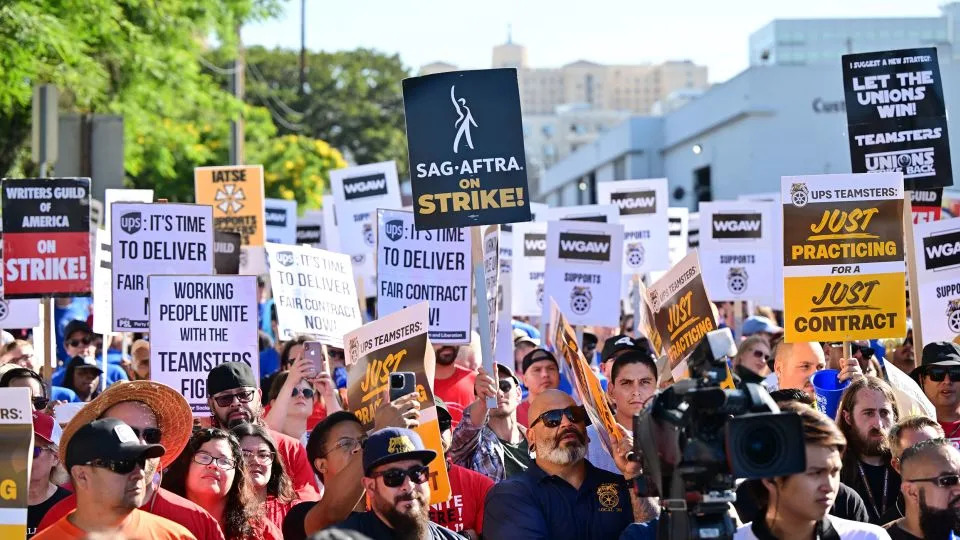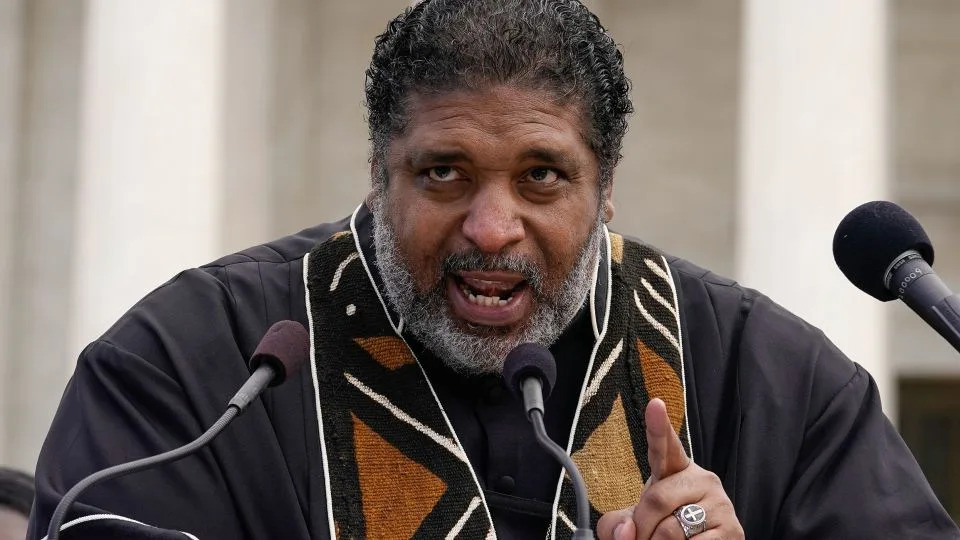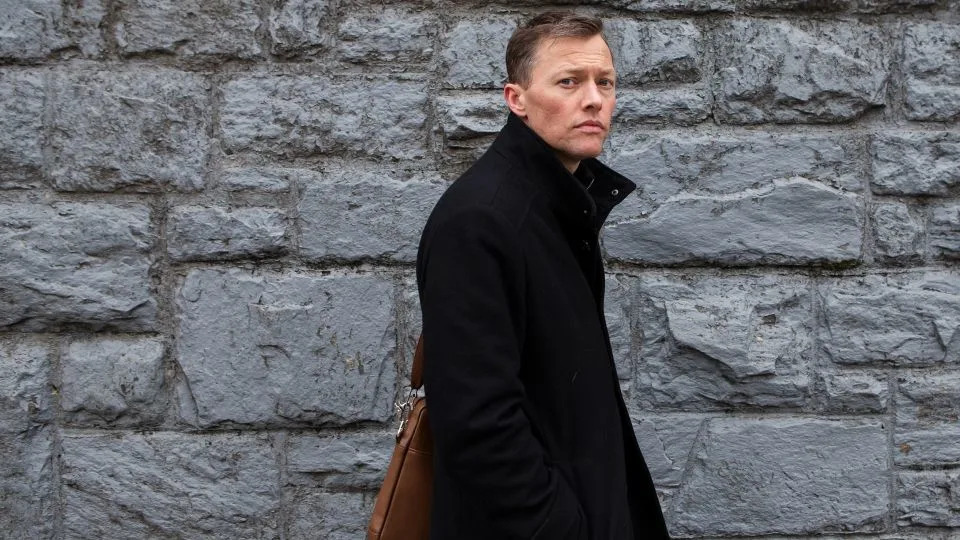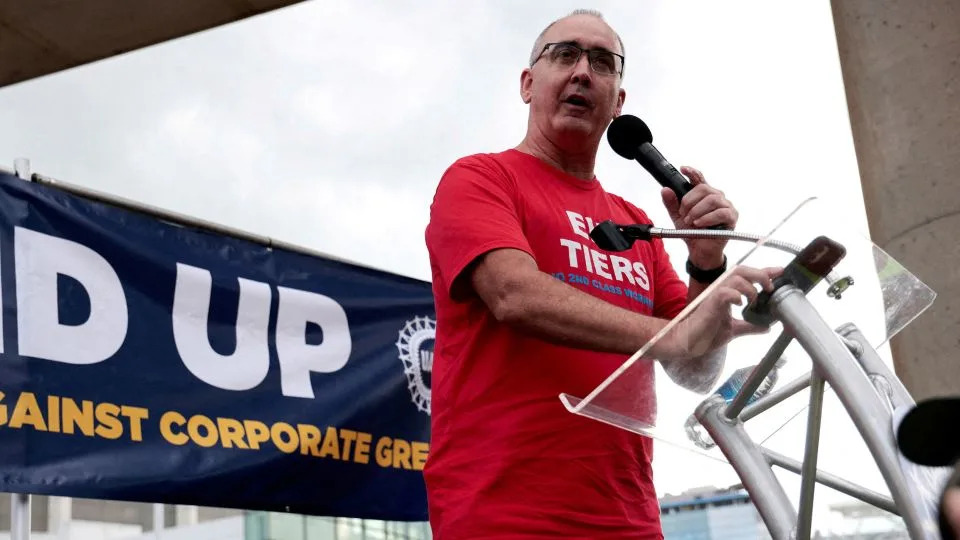Patrick J. McDonnell
Mon, November 13, 2023 at 4:00 AM MST·11 min read

The pool area of Hotel Los Flamingos, where Johnny Weissmuller, John Wayne and other Hollywood notables once hung out, is destroyed.
Acapulco's iconic cliff divers are ready to resume daily shows, but there are no spectators to witness their death-defying leaps from the craggy heights of La Quebrada into the churning sea below.
"We live off tourism, and there are no tourists now," lamented Brandon Palacios, one of the divers.
Likewise, Tomás Mayo, a familiar figure in a cowboy hat and boots who has strummed his guitar for decades along Acapulco's beaches, has no audience for his serenades. "The beaches are empty," he noted.
Others face more profound troubles. Relatives of four crew members of the sunken yacht Litos still hold out hope that their missing loved ones survived.
"We want the navy and the government to keep doing everything they can to continue the search," said Mei-li Chew Irra, whose husband, Ulises Díaz Salgado, was the captain. "We cannot give up."
This is the grim reality of Acapulco more than two weeks after Hurricane Otis — packing Category 5 winds of more than 165 miles an hour — ripped through the fabled Pacific resort and wrought unprecedented devastation, leaving at least 48 dead and 31 still listed as missing, and exacting up to $15 billion in damage.
Read more: Razor wire and soldiers fail to deter migrants: 'They say it's easier to get in with kids'
Acapulco's glitziest hotels and condominiums are mostly windowless hulks. The one-time hideaway of Johnny (“Tarzan”) Weissmuller and Hollywood pals like John Wayne is a pile of rubble. Overturned yachts and smashed fishing vessels bob in picturesque bays.
Residents queue beneath a blazing sun for handouts of food and water, as soldiers with assault weapons make their rounds along a once-rocking coastal boulevard now lined with tattered palms, downed power lines and piles of fetid trash.

Residents arrive for food handouts in Acapulco in the shadow of damaged hotels and condos. (Patrick McDonnell / Los Angeles Times)
Acapulco’s normally verdant tropical slopes have assumed a dull, brownish patina: The cyclone uprooted stands of palms and stripped others to the bark.
Read more: This woman is the front-runner to be Mexico's next president
“I never thought I would live to see Acapulco in such a state,” said Baltazar Quintera, 53, who earned his living at a now-shuttered beach kiosk specializing in chile-spiked beer concoctions — just as his mother had once hawked hand-woven robes to beach denizens.
“Acapulco is unrecognizable," Quintera added as he gestured towards the ruins of a series of seaside bars and cafes, their palapas (palm-thatch roofs) caved in atop jumbles of white plastic tables and chairs.
Crews from throughout Mexico are working to remove rubble from streets and beaches and to restore electricity, running water, telephone and Internet service to a city and environs that was home to about 1 million when Otis struck shortly after midnight on Oct. 25.

Most of the boats are damaged at the Acapulco Yacht Club. (Patrick McDonnell / Los Angeles Times)
Roads are now mostly passable compared with the mayhem in the first days post-Otis, a testament to the efforts of intrepid cleanup brigades, who are applauded as heroes here.
Soldiers guard gas stations and the hulks of shops emptied of most everything including food, appliances, beer and liquor during the industrial-sized looting frenzy at outlets big and small — from Walmart and Sam's Club to neighborhood groceries — that immediately followed the storm.
Schools remain closed. People share tales of survival and loss.
Read more: How many people work for the Mexican drug cartels? Researchers have an answer
Rebuilding the ravaged hotel infrastructure — 80% of it destroyed or damaged — may take years, experts say. And that poses an existential challenge for a city that for generations has been dependent on tourism.
“The problem is the hotels — visitors need a place to stay,” said Palacios, 30, a member of an association of more than 50 cliff divers, who began their perilous, extreme-sport vocation as youngsters learning from elders how to read the tides and ocean depths to avoid potentially fatal mishaps. "Without tourists, what can we do?"

A mural of one of Acapulco's famed cliff divers next to a beachside boulevard that has been cleared of debris from the storm. (Patrick McDonnell / Los Angeles Times)
Otis is the strongest storm on record to have ever battered Mexico’s Pacific Coast, scientists say. And it hit Acapulco head-on, picking up intensity over warm offshore waters with stunning velocity — wind speeds increasing by 115 miles an hour during a 24-hour period.
Its sudden fury left authorities, residents and tourists with little time to prepare as Otis plowed a broad swath of destruction.
The upcoming peak holiday season appears a near-total write-off.
"Right now we have no water or power,” said César Olivares, who runs a budget 10-room hotel close to Caletilla Beach, a popular destination for working-class vacationers who can rent a room for $25 a night or so. “We have seen the same families here for generations. Acapulco is not just for rich people or movie stars. Average families come here for a break.”
Unlike Olivares' facility, many of Acapulco's large luxury hotels need near-complete reconstruction that will drag on well beyond the full restoration of power and other services.

Scuba divers at Caleta Beach, Acapulco, return from searching for sunken fishing boats. (Patrick McDonnell / Los Angeles Times)
Acclaimed for its spectacular bays and Pacific vistas, Acapulco evolved in the 20th century from a sleepy fishing village and port to a playground for the international jet-set. John F. and Jackie Kennedy honeymooned here, Frank Sinatra hosted a legendary birthday bash at the Las Brisas Hotel, and the town inspired the 1963 Elvis Presley musical lark "Fun in Acapulco," whose opening shots focused on a hotel along Caletilla Beach.
In recent years, however, Acapulco has acquired a reputation as a faded haunt plagued by drug cartels and gang shootouts — even attaining the ignominy of being Mexico’s murder capital for a few years, though police say crime is down and other cities have assumed that inauspicious label.
Read more: Sons of Mexico's El Chapo: We don't make fentanyl — or feed victims to tigers
Foreign tourists have increasingly diverted to Cancún and Mexico’s Caribbean coast. But despite its wilted grandeur, Acapulco has remained the go-to coastal getaway for Mexico City’s landlocked multitudes, just a four-and-a-half-hour drive away along the Autopista del Sol, a toll expressway completed in the early 1990s.
Next to Caletilla is equally popular Caleta Beach, where, last week, a wayward yacht thrust ashore during the storm was perched incongruously on the sand. Teams of fishermen with scuba tanks were scouring the offshore seabed for their lost vessels. They used buoys and ropes to nudge the wooden boats to the surface and then to the beach for damage assessment.

Wrecked boats along the beach in Acapulco. (Patrick McDonnell / Los Angeles Times)
“It’s like the Titanic!” said Liliana Castrejón, 28, whose family craft, Siete Vientos (Seven Winds), was pulled from a depth of 30 feet in the ocean. It has some holes to patch and a missing motor but is otherwise intact. “This is our livelihood.”
A mile or so up the hills from Caleta stand the ruins of the Hotel Los Flamingos, a relic of Acapulco's Hollywood glory days, its rooms flooded, swaths of palm littering its grounds, its pink walls smeared with mud. Still on display outside the lobby, however, are black-and-white snaps of two of the hotel’s former movie-star co-owners — "Duke" Wayne and his buddy Weissmuller, the Olympic swimmer later famed for "Tarzan," partially filmed in and around Acapulco.
“When will we reopen? Who knows?” said Joaquín Cienfuegos, dazed front-desk man at Los Flamingos, as a dozen workers were busy with repairs. “Not for a while.”
Severe flooding and mudslides inundated poor hillside neighborhoods, while the winds carried away roofs of tin. Residents complained that aid was slow to arrive — even as authorities hastened to clean up Avenida Costera Miguel Alemán, the trendy coastal strip of bars, hotels and seafood eateries, now mostly wrecks.
"My home was full of mud and water," said Mayo, 74 , who has played his guitar for Acapulco beachgoers for more than 50 years.

Tomas "El Bronco" Mayo, 74, has played guitar for beachgoers in Acapulco for more than 50 years. He wrapped the guitar in plastic during the hurricane but lost seven pairs of boots. (Patrick McDonnell / Los Angeles Times)
Mayo, known professionally as El Bronco, lost seven pairs of specially made boots to the muck in his home in Acapulco's gritty La Garita district. On a recent afternoon, as he sipped a beer in one of the few reopened seaside restaurants, Mayo wore his sole remaining pair and his trademark cowboy hat.
His guitar — which features decals with flags of the United States, Mexico and Canada — also survived: He wrapped plastic around its case and held the instrument above his head as Otis raged.
“Acapulco will come back,” vowed the strapping Mayo. “People will always return to the beach.”
Read more: Mexico's peso is soaring. That's bad news for people who rely on dollars sent from the U.S.
Otis didn’t discriminate among rich and poor.
A week after the tempest, the anchorage of the Acapulco Yacht Club still looked like it had suffered intense bombardment. Adrift offshore were a plethora of stricken yachts, some overturned, others displaying deep gashes; masts, motors and radio equipment were squished together with coconuts, fishing lines, palm fronds and other maritime detritus.
Storm surges tore 20-ton sections of pier from their moorings and tossed them onto the shore. About 85% of the 350 boats at the club were sunk or damaged, said the commodore, Juan Emilio Proal, as he escorted a visitor along water's edge, in full view of the cemetery of luxury vessels swaying in the bay.
“We never imagined this,” Proal said, still in disbelief at the magnitude of destruction. “No one did.”
Acapulco's marinas are home to many pleasure boats of owners who live elsewhere. Hundreds of locally based captains and crews are tasked with caring for the multimillion-dollar craft. A key responsibility is to ensure that the vessels are safe during periodic storms. As Otis slashed the coast, some crew members lost their lives or went missing trying to save the yachts.
Among those who narrowly escaped is Leonel Avila, 20. He and the captain of the yacht on which he worked, along with a fellow deckhand, managed a harrowing flight from the yacht club through hurricane hell.

Leonel Avila, 20, fled the yacht where he was a crewman along with two other workers and made a harrowing escape through hurricane winds. (Patrick McDonnell / Los Angeles Times)
“I was frozen in fear,” Avila recalled of the moment before the three abandoned the boat that they were trying to safeguard. “Then my colleague yelled: ‘It’s time to react! The boat is going to sink! We have to go'!”
The three managed to leap one by one from the stricken vessel as it bounced in 15-foot waves, to a pier — dreading that they would be tossed into the water, crushed and drowned. Once off the boat, they huddled together and trudged on foot against the gale and airborne debris. They made their way to the clubhouse, where injured and shocked crew members waited out the storm.
The experience clearly traumatized Avila. He lost his source of employment and almost lost his life. He was hoping to score alternative work on a cleanup brigade. His long-term plan, though, is to return to the sea, where he has labored since he was 12, starting his nautical career as a helper on Acapulco’s signature glass-bottom boats. The tourist craft — many damaged in the storm — allow passengers to view fish swimming beneath the boats.
“The sea is my life,” Avila said. “I was born and raised in the sea. That’s where I want to be.”
Still listed as missing are the four crew members from the doomed yacht Litos. Among them is Abigail Andrade Rodríguez, 29, who served as the Litos' hostess and is a single mother of three — Jimena, 11, Yoseph, 10, and Alexi, 8. As the storm gained intensity, a desperate Andrade telephoned her sister, Yesmin Andrade Rodríguez, 37, from the wavering craft.

A shrine to the Virgen de Guadalupe survived on a bridge at Caleta Beach.
“The yacht is shaking back and forth, the windows are broken, and water is coming in,” Yesmin recalled Abigail saying. “Please, Yesmin, if you never hear from me again, if we never see each other again, tell my three children that I love them very much. That I’m so sorry, that I only wanted to work. I ask you, please: Take care of my kids when I’m gone.”
Special correspondents Liliana Nieto del Río in Acapulco and Cecilia Sánchez in Mexico City contributed to this report
This story originally appeared in Los Angeles Times.





















